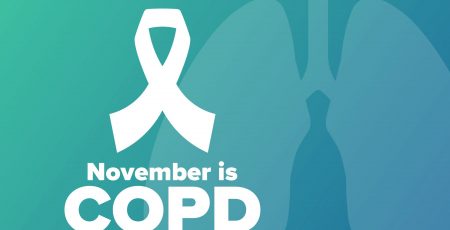30 Mar IMPACT Study Finds Endobronchial Valves Can Benefit Patients With Homogeneous Emphysema
A new study has revealed that endobronchial valves – tiny, one-way valves placed in the lungs to block airflow to diseased regions in order to achieve lung volume reduction – can benefit patients with homogeneous emphysema (emphysema distributed evenly across the lung). In the IMPACT study, Pulmonx Corporation’s proprietary Zephyr Endobronchial Valves (EBV) were placed in the lungs of 93 patients with severe homogeneous emphysema, in order to study the safety and effectiveness of Zephyr EBV treatment as compared to a control group of patients receiving medical management.
Patients treated with EBV showed greater improvements in lung function, exercise tolerance, and quality of life than the control group. Based on the results of this study, it appears that EBV therapy can benefit more patients than had been previously thought, including some who otherwise have very few therapeutic options available to them. Previously, the treatment typically was provided only to patients with heterogeneous emphysema (usually emphysema mostly in the upper lobes).
“These results prove that a substantially broader range of patients can benefit from the Zephyr Endobronchial Valve than previously estimated,” said Pulmonx Chief Executive Officer Glen French.
Study results showed that patients with homogeneous emphysema and little or no collateral ventilation who were treated with the Zephyr EBV experienced a 17% better improvement in FEV1 (see NOTE below) than the control group. They also had better improvement in exercise tolerance, increasing their distance 40 meters more than the control group in the Six Minute Walk Test (6MWT). In the St. George’s Respiratory Questionnaire (SGRQ), their scores improved 10 points more than did the scores of the control group.
Target lobe volume reduction was achieved in 97% of EBV subjects, which indicated that there was effective occlusion (blockage) of the target lobe following EBV placement.
Said Professor Ralf Eberhardt, MD, of the Thoraxklinik at the University of Heidelberg, and co-principal investigator of the study, “In the IMPACT study, we found that EBV treatment resulted in statistically and clinically significant improvements versus controls in pulmonary function, exercise capacity and quality of life in patients with severe homogenous emphysema and negative collateral ventilation.”
Associate Professor Arschang Valipour, MD, FCCP, of the Ludwig-Boltzmann-Institute for COPD and Respiratory Epidemiology at Otto-Wagner-Spital in Vienna, Austria, lead author of the paper and co-principal investigator of the study, recommended that health care providers should “focus on patients with hyperinflation and the absence of collateral ventilation, rather than on the homogeneity or heterogeneity of the disease. The IMPACT results show that selecting the right patient for endobronchial valve treatment is now simpler.”
More than 12,000 patients globally have undergone Zephyr EBV placements. To view a video of the Zephyr EBV procedure, click here.
It should be noted that endobronchial valves have, at this time, not been approved for use in COPD patients in the United States.
Information for this article was obtained from RT Magazine.
NOTE: The FEV1 (forced expiratory volume 1) is the volume of air forcefully exhaled in 1 second; and the FVC (forced vital capacity) is the total volume of air that can be maximally forcefully exhaled. If theFEV1/FVC ratio is less than 80%, it indicates that an obstructive defect is present.





No Comments